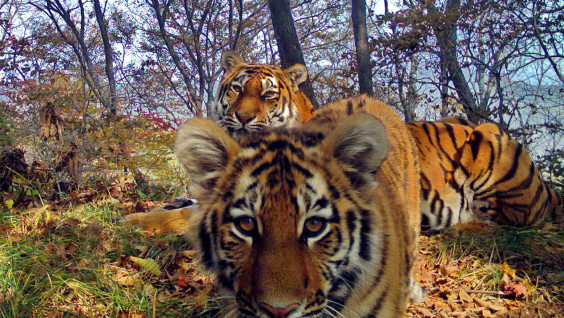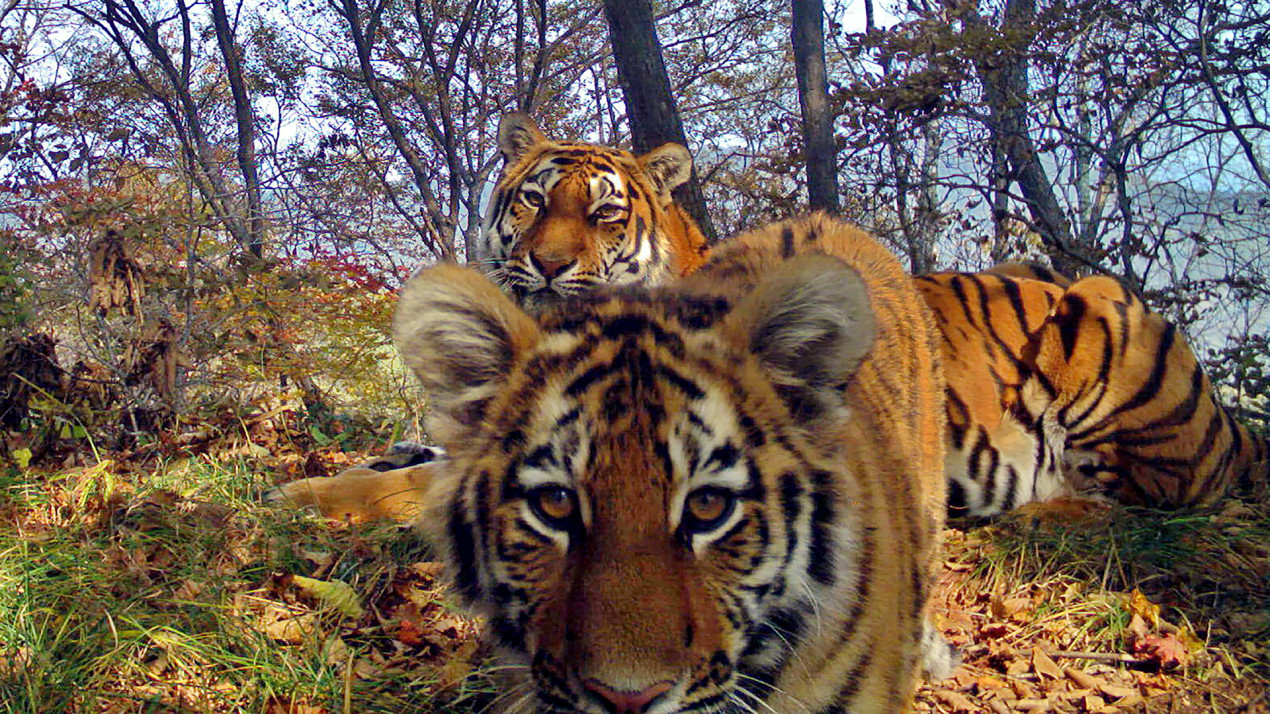
Photo: Daniil Goncharov, participant of the RGS’s contest "The Most Beautiful Country"
After India gained independence in 1947, the country’s authorities had to solve a lot of problems left over from the colonial past. One of them seemed to be unobvious against the background of the others: the number of the famous Bengal tiger was falling at an alarming rate. It was only in 1972 that the fundamental Wildlife Protection Act was adopted, and the following year the ambitious national «Tiger» project was launched. It was a breakthrough initiative for its time. Its formula contains a new philosophy of attitude towards wildlife. The project became a kind of algorithm, where each step assumed the next, even more effective one. It was this fact, coupled with the determination of the country’s authorities to preserve and then increase the number and habitat of tigers, that led to impressive results, which allowed experts to talk about the uniqueness of the Indian experience. As is often the case, setting goals and objectives correctly identified people who were able to make the idea come true. Having become head of the National Tiger Conservation Authority (NTCA) in 2008, Satya Prakash YADAV has become a key figure in tiger conservation in India. Today, as the head of the International Big Cat Alliance, he helps spread the Indian experience around the world. In 2025, the «Tiger» project was awarded the geographical International Crystal Compass Award in the category «The Best Social and Information Project for the Preservation of Natural, Historical, and Cultural Heritage.»
What are the features of Indian tiger conservation? What is the place of this beast in the value system of the country’s inhabitants? And why are the costs of organizing nature reserves economically beneficial? Dr. Yadav told about this in an interview for the website of the Russian Geographical Society.
Satya Prakash Yadav was born in 1964 in Ambikapur, Chhattisgarh. Bachelor of Science in Agriculture, Master’s Degree in «Genetics and Plant Breeding», «Forestry and Wildlife». He holds a doctorate in natural sciences with a specialization in tiger conservation. Director General of the International Big Cat Alliance.
Initiated by the government of the country in April 1973, the «Tiger» project was first implemented in nine reserves of the country, covering an area of more than 18,000 square kilometers. In 2005, there were already 57 tiger reserves, and their area increased to almost 83,000 square kilometers. As of 2023, there were 3,682 wild tigers in India, accounting for almost 75% of the global wild tiger population. The dynamics of tiger population growth in the country was confirmed by a publication in the Guinness Book of World Records on the world’s largest wildlife study using camera traps: in 2018, they were placed in 26,838 locations.
The success of the Indian «Tiger» project is the result of individual leadership with strong institutional support from the NTCA, the forest departments of the tiger range states in India, and scientific organizations such as the Wildlife Institute of India.

Satya Prakash Yadav (left) accepts the Crystal Compass from the hands of Vyacheslav Rozhnov, Scientific Director of the Severtsov Institute of Ecology and Evolution of the Russian Academy of Sciences, member of the Russian Academy of Sciences. Photo: Feliks Geller, Anna Zinovieva
— Mr. Yadav, why did you decide to dedicate your life to animal welfare?
— The place where I was born and studied is located in a wooded area. The former king of this region set a record for the number of tigers hunted in his lifetime, more than 1,200. Tiger hunting was allowed in India until 1969. By the way, in December 1947, the last cheetah was killed in the same region, after which it was declared an extinct species in India.
It was my conscious decision to take up tiger conservation as an adult. I believe that God has given me the opportunity to serve the wild in order to correct historical injustice. This prompted me to choose a job with the prestigious Indian Forest Service, and that is how I got the opportunity to work at the NTCA under the Ministry of Environment, Forests, and Climate Change of India.
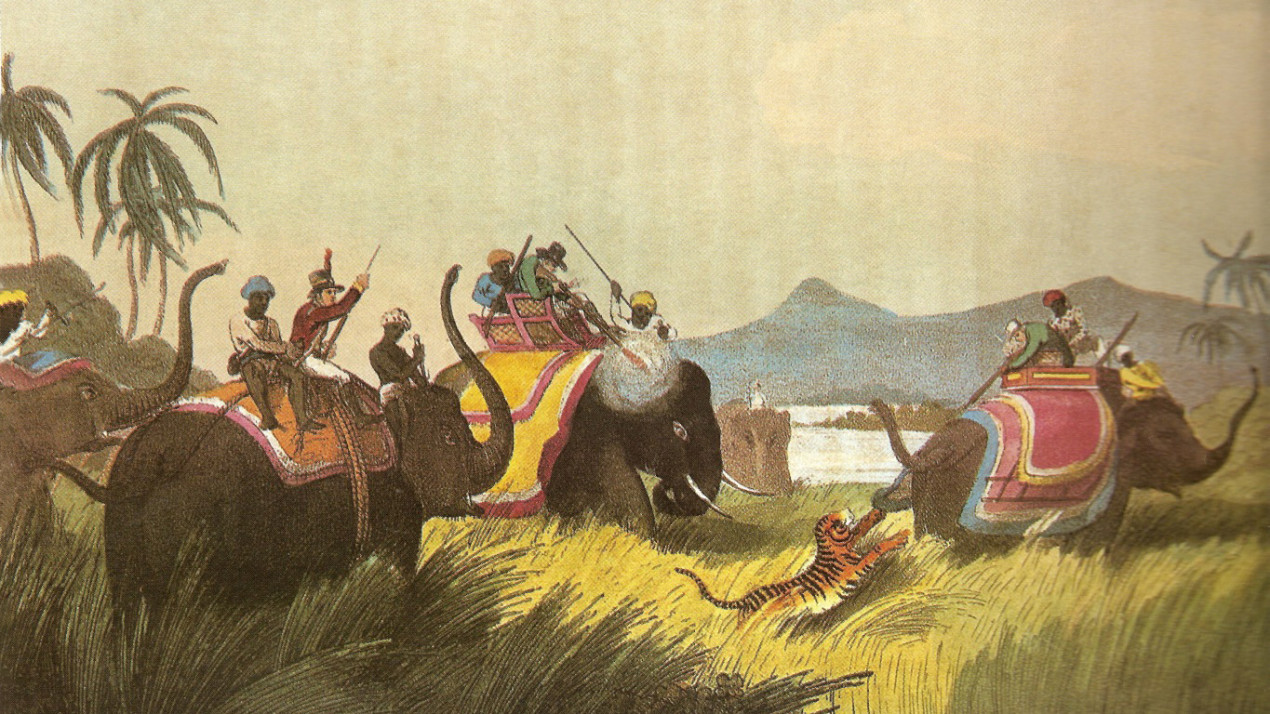
Tiger hunting in India. Photo: https://ru.wikipedia.org
— Why did the tiger become your main object of research and protection?
— I feel a natural and spiritual connection with it. It’s a charismatic animal. The sight of a tiger in the wild is fascinating. It is strong, powerful, graceful, and intelligent. It is a wonderful hunter, fearless, and beautiful. Despite their great strength, tigers could be called striped monks. They hunt herbivores (for example, deer) only out of necessity, not out of greed. Tigers maintain an ecological balance. As you know, tigers need vast territories for survival and sustenance. And when their habitats come under protection under the tiger conservation program, these forested territories begin to work for the benefit of all mankind, providing invaluable ecosystem assistance.
— When did you start your work and what was its essence?
— I joined the National Tiger Conservation Authority in New Delhi as a co-director in 2008 and started working to preserve the tiger population in the country. My main job was to coordinate work with all tiger reserves in the country, approve their budget requirements, issue recommendations and guidelines for tiger conservation, introduce innovative ideas, reintroduce tigers, develop the potential of front-line staff, use technology, implement standard operating procedures based on real needs, develop various protocols, and implement reliable scientific monitoring and evaluation protocols, etc.
— What is the tiger protection method in India?
— We worked on the principle of the «core-buffer-corridor» strategy, which became part of the law. The core (ideally, its area is approximately 1,000–1,200 square kilometers) should be considered as an inviolable territory where any economic activity is prohibited. This area is intended exclusively for breeding tigers. A buffer zone of approximately equal area is created around the core, which has a lower degree of protection. Such a zone is considered a multi-purpose area. By their very nature, tigers migrate from their birthplace to create their own territory, and therefore they need connecting corridors. Tigers cannot survive on islands of protected areas. We have provided scientific mapping of all tiger corridors at the national level and have included these territories in plans for conservation and management of the tiger population.
By adopting this strategy, we have made every effort to cover all potential animal habitats with the «Tiger» project and transform them into tiger reserves that enjoy the highest degree of protection under Indian law (the Wildlife Protection Act). There are currently 58 tiger reserves in India, covering an area of more than 85,000 square kilometers.
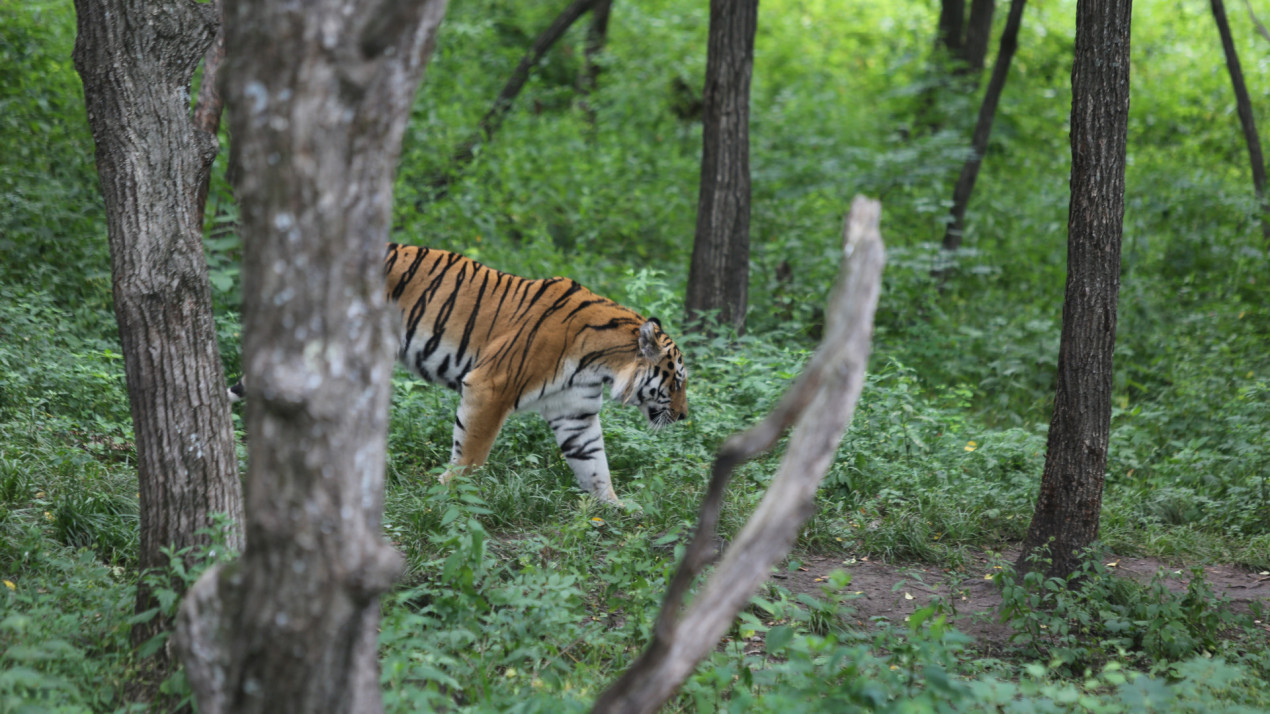
Every tiger needs a large and safe habitat. Photo: Artemy Zakharov, participant of the RGS’s contest "The Most Beautiful Country"
— What are the criteria for territories where nature reserves have appeared?
— The creation of new tiger reserves or the inclusion of the territory in the «Tiger» project area was based on a thorough scientific analysis of the habitat, the viability of the habitat, the connectivity of the habitat, the state of the prey population, the size of the territory, the location of human habitation, etc. Only potential tiger habitats receive the status of tiger reserves.
— What was the most difficult part of your job?
— Tigers are an endangered species, and we had to be constantly on the lookout for their safety. We assumed that every tiger in the wild is at risk of poaching, and we acted accordingly. Another major problem we faced was conflicts between humans and tigers in certain areas.
— Who helped you?
— The success in tiger conservation is due to the Government of India, the National Tiger Conservation Authority, the governments of all states of the tiger’s habitat, the Wildlife Institute of India, civil society institutions and local communities that have supported tiger conservation efforts. The devotion and dedication of thousands of employees working on the front lines in tiger reserves is commendable. With the exception of isolated cases of conflict between humans and tigers, we have received broad support for tiger conservation from all sides.
— How difficult was it to convince the country’s authorities of the need to preserve tigers?
— Fortunately, the Indian authorities were well aware of the importance of tiger conservation and its role in maintaining the country’s environmental security. The government has always supported the «Tiger» project and the creation of new reserves. The importance of tiger conservation in terms of its monitoring value was easily understood by politicians and ordinary people.
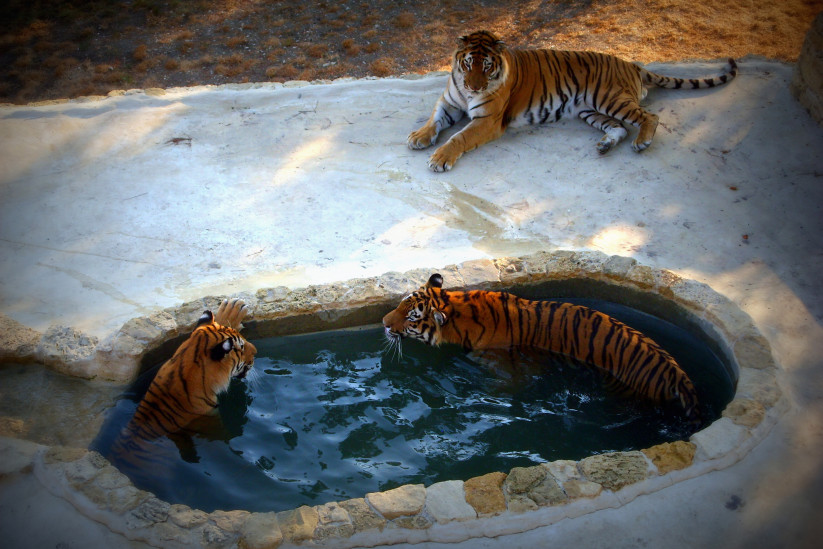
In recent years, the tiger population in India has been growing by more than 6%. Photo: Fyodor Dokukin, participant of the RGS’s contest "The Most Beautiful Country"
— In every country, there are always tasks that seem more urgent than protecting these ferocious predators. There are problems of poverty, homelessness, lack of access to education, etc. Why has the protection of big cats become one of the main priorities for the state and society?
— Economic development, job creation, infrastructure construction, healthcare, sanitation, education are all important, but we believe in «green growth», where development and nature conservation go hand in hand. We believe in a balance between economic development and ecological balance, which is why tiger conservation was considered equally important.
— A lot of money has been invested in the «Tiger» project. Is there an economic effect from such investments?
— Indeed, investments in the «Tiger» project have totaled about $1 billion since its launch in 1973. These funds can be considered well-spent, as they have led to significant success in tiger conservation, which has resulted in an increase in its population. India has become the world’s largest tiger habitat country, accounting for more than 70% of the global tiger population.
The economic return on these investments is much higher due to both direct and indirect benefits. About 600 freshwater streams originate in tiger reserves or have catchment areas in tiger reserves, so tiger conservation contributes to ensuring the country’s water security. These forests are fully protected as tiger habitat and therefore contribute to climate change mitigation by reducing carbon emissions.
Today, tiger reserves are becoming the engine of economic growth, as they create many jobs for local communities, stimulate tourism and a number of related activities.
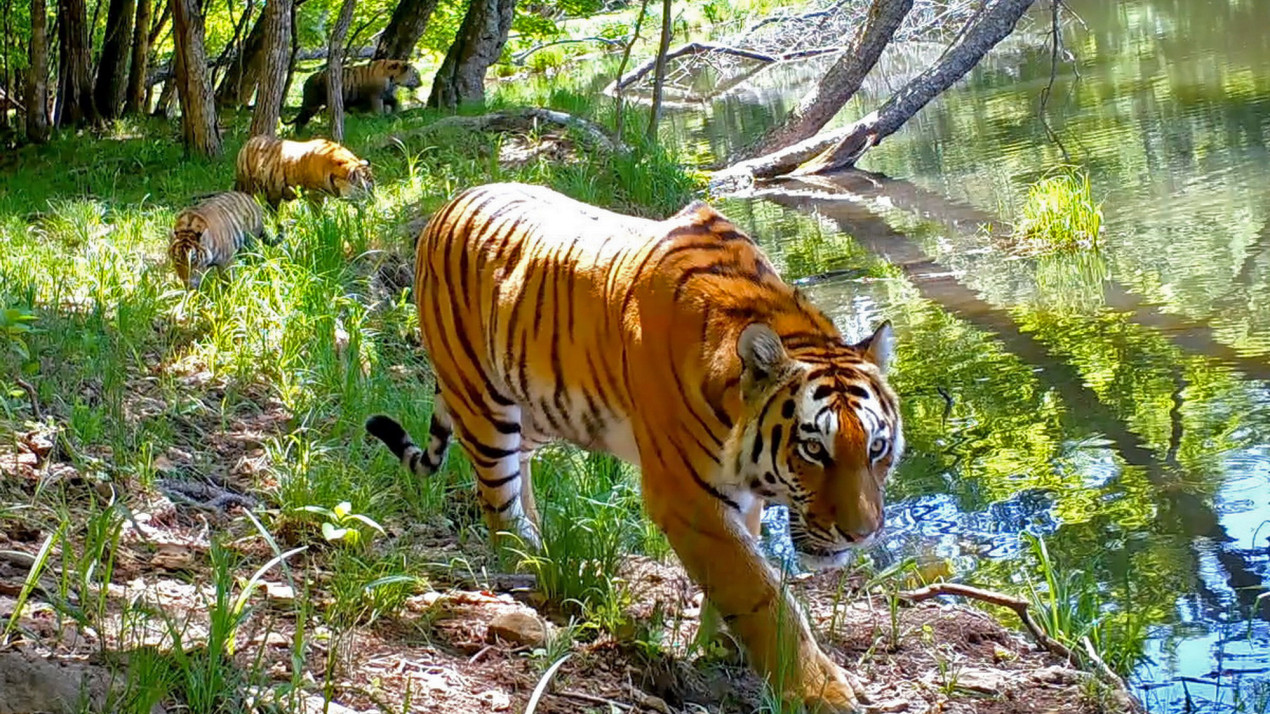
India accounts for more than 70% of the global tiger population. Photo: Viktor Storozhuk, participant of the RGS’s contest "The Most Beautiful Country"
— The creation of reserves was probably not immediately received with enthusiasm by the local population. Persuasion and education of the population or restrictions and punishments — which is more effective?
— The benefits of tiger conservation must be direct and substantial for the local community to receive their support. People living in such territories should be treated as an important stakeholder. Educating the public, as well as clarifying the restrictions and prohibitions provided for by law, is equally important. The strategy should include a balance of both of these components.
— What is the role of innovations and new technologies in the implementation of the tiger conservation program?
— Innovations and the use of technology are of great help: firstly, in monitoring the tiger itself, its food supply and habitat, secondly, in the fight against poaching, and finally, in patrolling and surveillance. Currently, the use of drones, camera traps, radio collars, sensors, deep-seeking metal detectors, GIS technologies for mapping, the use of artificial intelligence, electronic surveillance, satellite imagery, etc. is widespread in India.
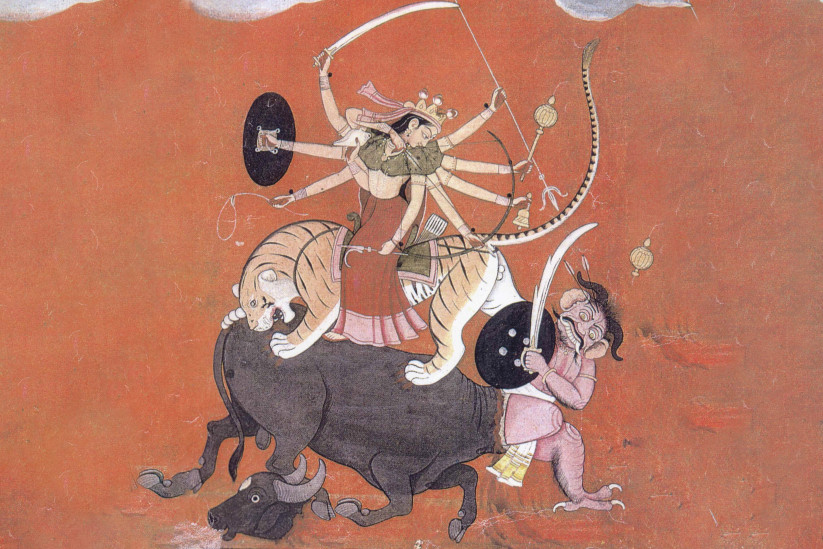
Goddess Durga riding a tiger. Photo: https://ru.wikipedia.org
— Everyone knows about the special attitude of Indians towards cows. Are tigers somewhere nearby in this pantheon of animals?
— The cow is considered a sacred animal in our country. It is usually referred to as the mother, hence the attitude of the Indians towards it. The tiger is our national animal, deeply rooted in the socio-cultural ethos of Indian society. It symbolizes strength, might, intelligence, power, and beauty. There are several communities in India that treat it like an older brother and a defender of life. Some communities worship it as their deity. The tiger has a mythological meaning, and is also considered the abode and at the same time the «vehicle» of the goddess Durga, who destroys evil forces.
— Even within the same species, animals are different: each has its own character, its own story. Were there any tigers in your practice that you particularly remember?
— There were three such tigers. A male named Charger in the Bandhavgarh Tiger Reserve in central India. A very large, dominant, and absolutely fearless beast. It is known that he was the father of tiger cubs from several litters, and also killed many males in fights for territories. A tigress named Collar Wali in the Pench Tiger Reserve in the central part of the country was very fecund and produced several litters with five to six cubs. And a tigress named Machli in the Ranthambore Tiger Reserve in the western part of the country, which also produced several litters and lived for a long time.
— Please tell us about the most dramatic incident in your life related to tigers.
— I was on a visit to the Corbett Tiger Reserve, we were riding an elephant with local staff, and suddenly a tigress attacked me with a loud roar. The reason was that she was in the bushes, we didn’t see her and got too close when the tigress was eating — she had just killed a spotted deer. This situation indicates only one thing: you always have to be careful in the land of tigers.
— Looking back at the work you’ve done, what are you really proud of?
— I am glad and proud that I had the opportunity to lead a great cause and become a part of the success of tiger conservation in the country. Several of my initiatives are now regularly practiced and used in the day-to-day management of tiger reserves. I was able to see the results of my efforts. Currently, the number of tigers is showing an annual increase of 6,1%. India today is the country with the largest tiger range in the world. I also participated in the successful reintroduction of tigers, and the results were amazing. By the way, India became the first country in the world to successfully reintroduce the tiger.
— Tigers are not the only rare species that lives in your country…
— Indeed, India has a very good track record in the field of wildlife conservation. India is the country with the largest range of Asian elephants in the world. We have the largest one-horned rhinoceros in the world. India is the only Asian lion habitat in the world. Indian specialists have carried out the first successful intercontinental aerial transportation of a cheetah from the wild to the wild with subsequent reintroduction. Today, we strive for a balance between development and economic growth on the one hand and the conservation of biodiversity and wildlife on the other.
— As far as I know, the news about your project winning the Crystal Compass Award was met with great enthusiasm in India. Tell us why this award is important to you personally, your organization, and your business.
— India is making great strides in tiger conservation, which is known all over the world. But the Crystal Compass Award was the first international recognition of the success of the «Tiger» project, so this prize is important both for me and for everyone involved in the project.
— Today you are the head of the International Big Cat Alliance, helping other countries to use the Indian experience in the conservation of rare species. Do you see the prospect of such success at the global level?
— At least, I dream about it and try to do everything in my power to stop the population decline of all big cats (tigers, lions, leopards, snow leopards, cheetahs, cougars, and jaguars) and restore their habitat and populations around the world.
The National Crystal Compass Award is awarded annually for outstanding achievements and scientific research in the field of geography, ecology, and related sciences, or for major contributions to the preservation of natural, historical, and cultural heritage, and the development of society. It is one of the main and most prestigious geographical awards in the world. Over the past 13 years, almost 5,000 projects from 51 countries have been nominated for the award. Almost 3.2 million people expressed their preferences in the special «Public Recognition» category, where the laureates are determined by online voting. This year’s award is supported by the Presidential Foundation for Cultural Initiatives and is dedicated to the 180th anniversary of the RGS.
Ayvar Valeev
